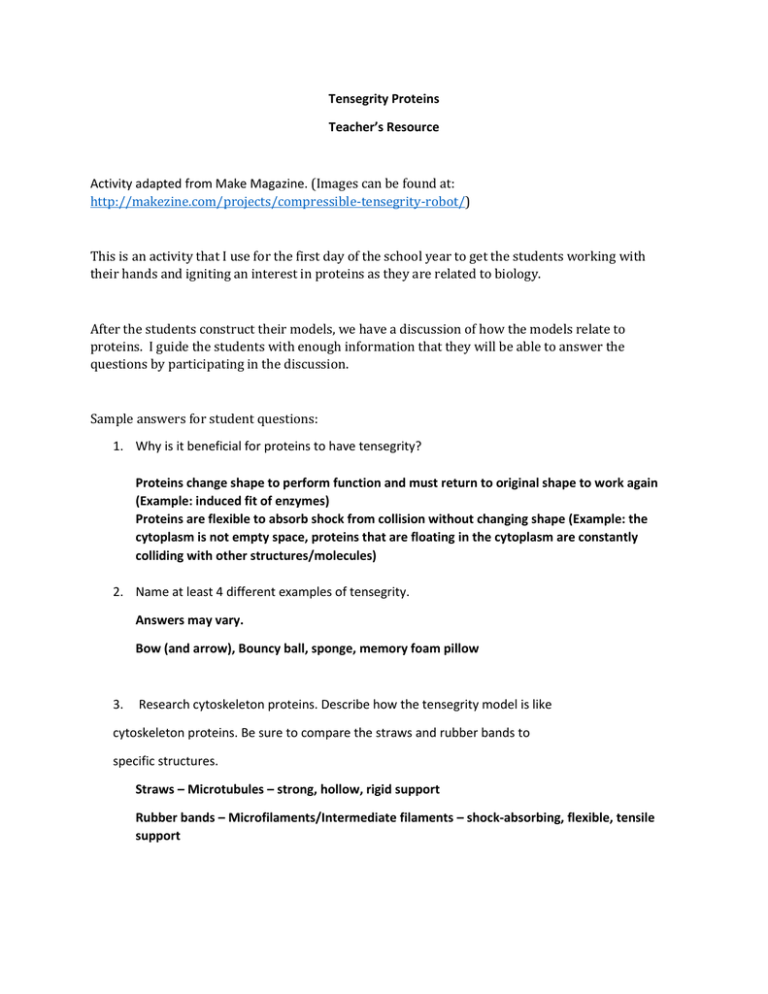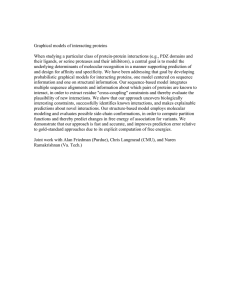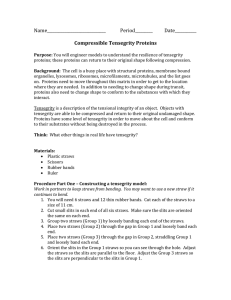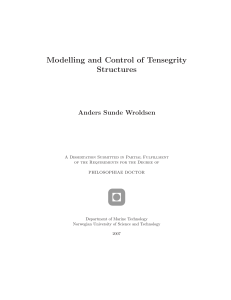4 Teacher s Resource Tensegrity Proteins.doc
advertisement

Tensegrity Proteins Teacher’s Resource Activity adapted from Make Magazine. (Images can be found at: http://makezine.com/projects/compressible-tensegrity-robot/) This is an activity that I use for the first day of the school year to get the students working with their hands and igniting an interest in proteins as they are related to biology. After the students construct their models, we have a discussion of how the models relate to proteins. I guide the students with enough information that they will be able to answer the questions by participating in the discussion. Sample answers for student questions: 1. Why is it beneficial for proteins to have tensegrity? Proteins change shape to perform function and must return to original shape to work again (Example: induced fit of enzymes) Proteins are flexible to absorb shock from collision without changing shape (Example: the cytoplasm is not empty space, proteins that are floating in the cytoplasm are constantly colliding with other structures/molecules) 2. Name at least 4 different examples of tensegrity. Answers may vary. Bow (and arrow), Bouncy ball, sponge, memory foam pillow 3. Research cytoskeleton proteins. Describe how the tensegrity model is like cytoskeleton proteins. Be sure to compare the straws and rubber bands to specific structures. Straws – Microtubules – strong, hollow, rigid support Rubber bands – Microfilaments/Intermediate filaments – shock-absorbing, flexible, tensile support









